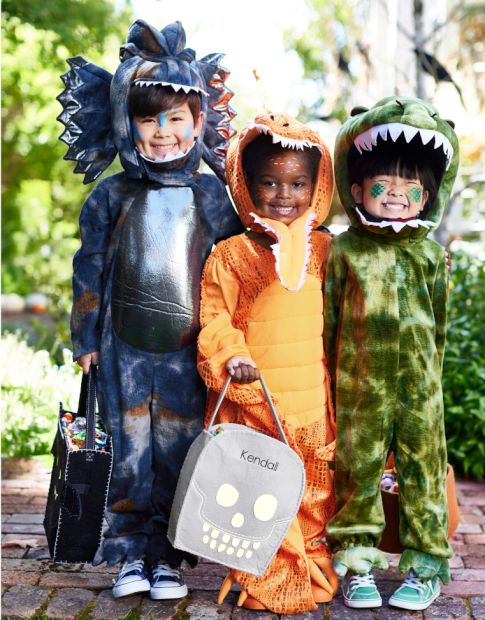Creating a fun and inclusive Halloween experience for neurodivergent children can require some thoughtful planning and consideration, but doesn’t have to be difficult. Here’s some simple tips to help you make Halloween enjoyable for all!
Sensory-friendly decorations:
- Use soft, non-flashing lights and decorations to create a warm and inviting atmosphere.
- Play soft, calming music or Halloween-themed tunes at a low volume. Avoid loud or sudden noises, like screaming sound effects or startling props.
- Incorporate tactile decorations like soft fabrics or sensory-friendly textures.
- Create sensory bins with Halloween-themed items, like small plastic pumpkins, rubbery spiders, and other tactile objects that children can explore with their hands.
- Lay out a sensory pathway on the floor, using items like foam mats or rugs with different textures for kids to walk on barefoot.
- Designate quiet, sensory-friendly areas where children can take breaks if they become overwhelmed. These areas should have soft seating, calming decor, and possibly sensory tools like fidget toys or weighted blankets.
Costume choices
- Encourage the child to choose a costume that aligns with their sensory preferences. Some may prefer loose-fitting costumes, while others might like snug ones.
- You can incorporate adaptive clothing such as weighted vest, compression garments, noise cancelling headphones, or sunglasses into costumes.
- Consider using a pair of pajamas as a costume. Many characters are featured in pajamas. These are typically made from soft and breathable fabrics.
- Create a costume from soft felt fabric, which is easy to work with and allows for customization. For example, you can make a felt dinosaur tail or butterfly wings.
- Choose costumes that involve comfortable headbands or hats. For instance, a headband with cat ears, a simple hat for a witch, or a tiara for a princess.
- Sometimes, the simplest option is to create a costume using everyday clothing. For example, a child can be a chef with an apron and chef’s hat or a painter with an old shirt and a paintbrush.
- Look for adaptive costumes specifically designed for children with sensory sensitivities. These costumes often feature tagless designs, flat seams, and soft materials.
- For kids who wander consider adding items that increase their visibility at night. Additionally, glowing items may double as sensory tools for sensory seekers!
Trick-or-treating preparations

- Practice the routine of trick-or-treating in advance so the child knows what to expect.
- Use a visual schedule or a social story to help them understand the process.
- Ensure the child’s costume is comfortable and doesn’t cause sensory discomfort.
- Encourage the child to carry a communication card or wear a badge that indicates they are neurodivergent.
Alternative trick-or-treat options
- Consider hosting a sensory-friendly trick-or-treat event in your home or a familiar, quiet environment.
- If your child is uncomfortable with the idea of going door-to-door, try trunk-or-treat events or local businesses that offer candy.
Sensory breaks
- Plan for sensory breaks if the child becomes overwhelmed.
- Bring along sensory tools for the child to use while trick-or-treating.
- Designate a quiet and calm space where the child can take a break if needed.
Social support
- Inform neighbors and friends about your child’s specific needs and preferences so they can be understanding and accommodating.
- Teach siblings and friends about neurodiversity, encouraging empathy and understanding.
- After the festivities, maintain a structured routine to help the child transition back to their comfort zone.
Remember that every child is unique, and what works for one may not work for another. Always consider the individual needs and preferences of the neurodivergent child you are supporting and be flexible in your approach. The most important thing is to create an enjoyable and inclusive Halloween experience that respects their comfort.


Comments are closed.